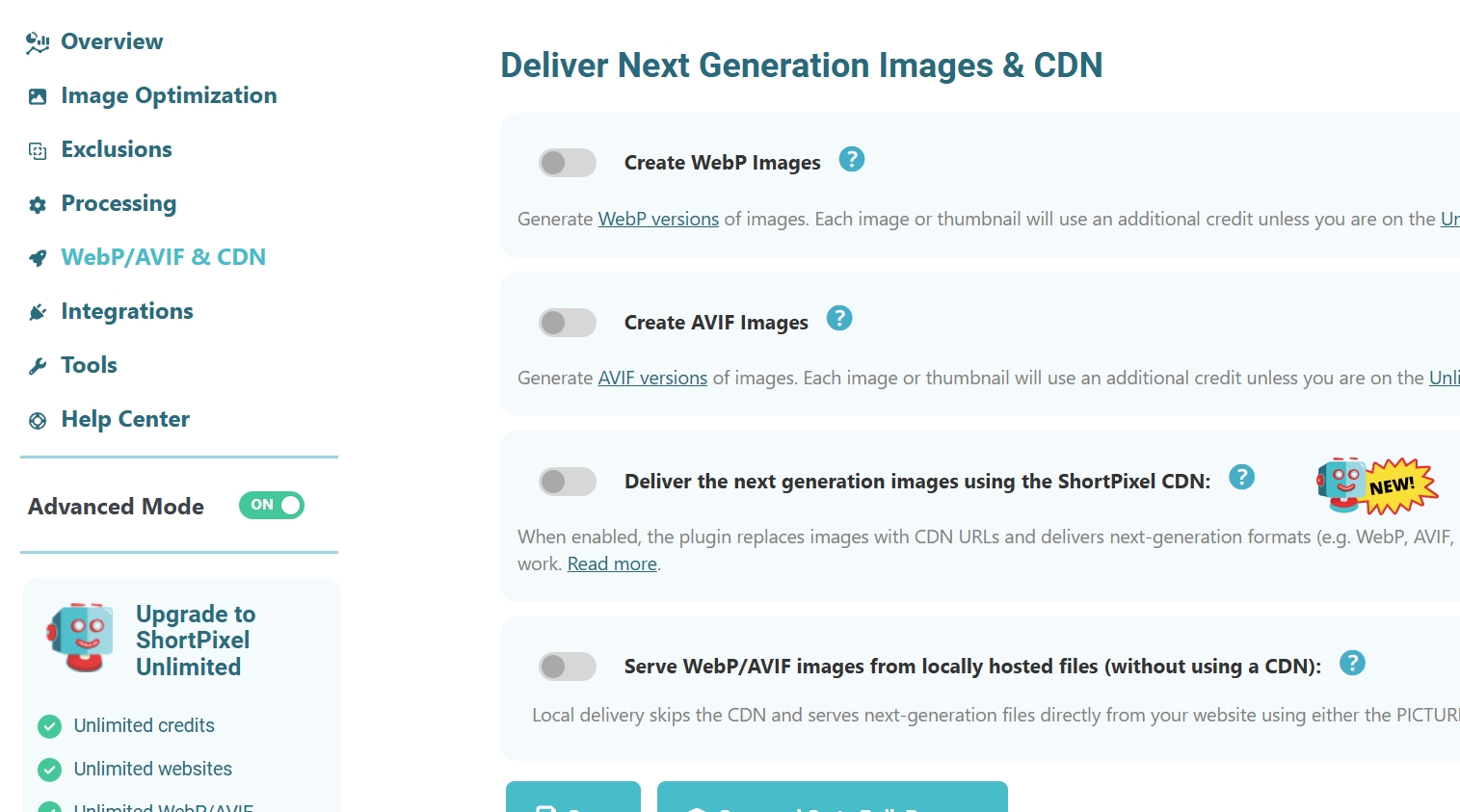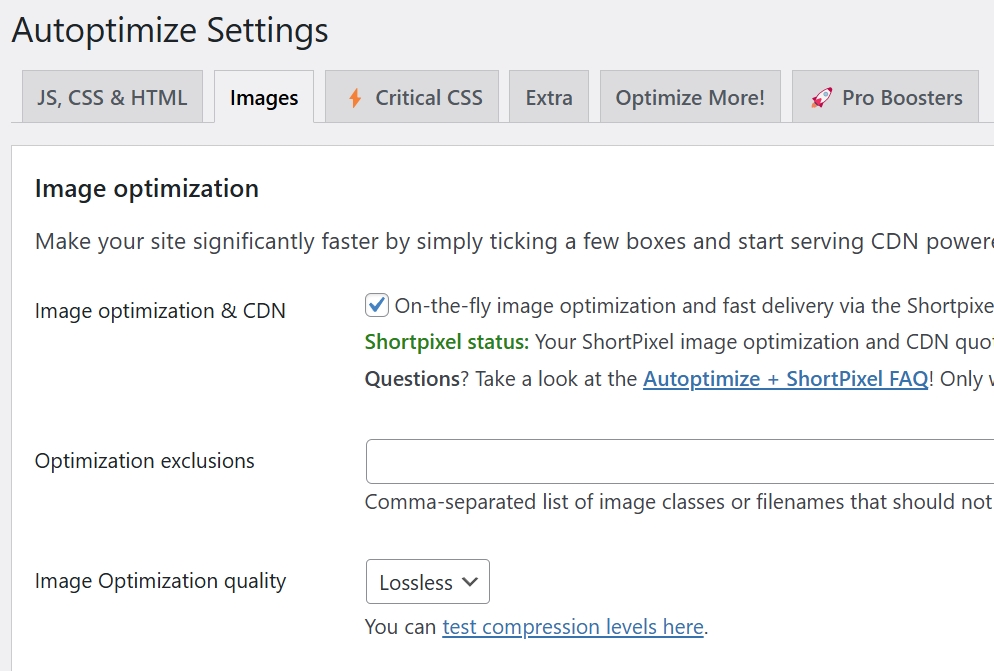Do I still need ShortPixel Image Optimizer (SPIO) if I installed Autoptimize and enabled its “Optimize images” option? Should I deactivate SPIO? Which one is better?
These are some of the questions we receive regarding these two plugins, and here’s an attempt to make things clearer.
ShortPixel Image Optimizer (SPIO) #
SPIO optimizes your physical image files on your server. To learn more about how SPIO works, click here.
Who is it for? #
- If the audience of your website is local and your website is hosted in the same city or small country, then we would generally recommend using SPIO. Just optimize all the images once and this should make the images of your site load faster for your audience.
- If you need to free up disk space from your server, then you should use SPIO with the backup option deactivated. This is the only way to reduce the physical used space of your server.
- If you need to create WebP or AVIF files and you prefer to have them physically on your server alongside your original images, SPIO can do this. To learn more about this, click here.
- If you are on a budget, SPIO is usually cheaper in the long term, as you only need to optimize your images once. Autoptimize usually incurs ongoing costs due to offering exclusively a CDN service. Please note that SPIO can also deliver your images from our fast CDN, but it is optional, and if you choose to do so, additional costs may incur.
How are the credits counted? #
SPIO uses 1 credit for every image optimized. Here you can read how SPIO uses your credits.
Autoptimize #
Autoptimize downloads your images, optimizes them, stores them on ShortPixel’s CDN, and it replaces the image URLs when your pages load, on the fly. It doesn’t edit any of your original image files. To learn more about how Autoptimize works, click here.
Who is it for? #
- If you want to keep your original files on your server untouched so that the optimization happens on the fly, you should use Autoptimize.
- If you want to serve WebP or AVIF files, but you don’t want to create additional files on your server, with Autoptimize you can serve, on the fly, images in “next-gen formats” like WebP/AVIF, regardless of the CDN you are using. This means you can make Google happy with a click of a button! 🙂
How are the credits counted? #
Autoptimize usually requires new credits on a monthly basis. Here you can read how Autoptimize uses your credits.
Can I use both plugins? #
Considering that SPIO has a CDN delivery option, the only situation where it makes sense to use both plugins is if you want to compress your physical image files on your server with SPIO but don’t want to create physical WebP/AVIF files, preferring them to be created and served on the fly by Autoptimize. In this case, you need to tweak a few settings:
- Go to Settings > ShortPixel > WebP/AVIF & CDN. Disable every single setting there.

- Go to Settings > Autoptimize > Images and enable “Image optimization & CDN”.
- Go to Settings > Autoptimize > Images and set the “Image Optimization quality” to “Lossless”.
